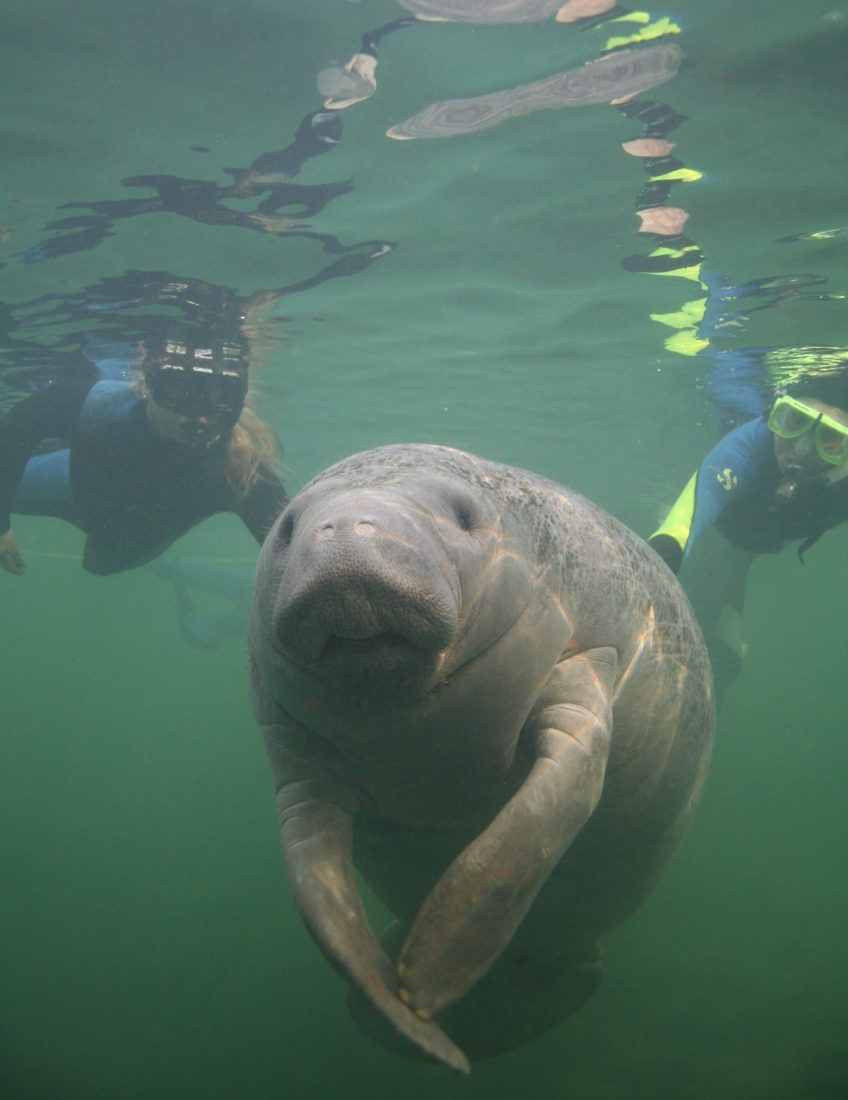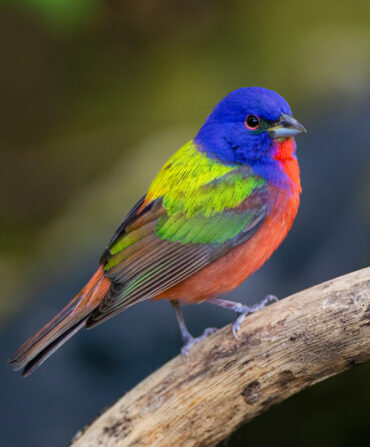Manatees have been in the news a lot lately—they’re arriving by record-breaking droves into Florida’s warm waters and natural springs as temperatures dip. Sea cows, as manatees are affectionately known, cannot tolerate water temperatures below 68 degrees for long or they may suffer from “cold stress,” which can be fatal. The recent cold snap means that Southern springs are filling with manatees seeking warmth; on Saturday, a new record of 747 manatees were counted at Florida’s Blue Spring State Park alone.
It’s not only the manatees arriving into springs that’s made headlines, however. The Florida Fish and Wildlife Conservation Commission (FWC) reported 1,101 manatees died in 2021, the worst year on record; nearly fifty have already died since the beginning of 2022.
One of the causes: Seagrass, manatees’ primary food source and natural habitat, is in jeopardy. “Water quality is the root of the problem, and why seagrass is dying,” says Patrick Rose, executive director of Save the Manatee Club and an aquatic biologist. Manatees can eat up to fifteen percent of their body weight daily, and with an average adult manatee weighing between 800 and 1,200 pounds, that’s a lot of plant life.
In response to the staggering number of manatee deaths in 2021, FWC and the U.S. Fish and Wildlife Service declared an “unusual mortality event” and are coordinating small- and large-scale response options, including a short-term feeding trial, also referred to as supplemental feeding. The January 21 FWC update shared that manatees began eating vegetation at the Temporary Field Response Station on the Atlantic coast for the first time on January 20, and the January 26 update shared that more manatees were taking advantage of the feeding station. (Note: It remains illegal for the public to feed manatees under state and federal law—leave this to the pros.)
The scene is different on the Gulf. Captain Paul Cross, director of operations at the Plantation Adventure Center in Crystal River, says the seagrass flats that run Florida’s west coastline from Tallahassee to just north of the St. Petersburg area are “an incredible habitat” for manatees to feed.
Crystal River’s seagrass beds were once depleted, similar to what is happening now on Florida’s east coast. Enter Save Crystal River, a non-profit, all-volunteer community organization and its Kings Bay Restoration Project, a seagrass restoration effort that removes decades of organic waste and bacteria that chokes the waterways, and then cleans down to the sandy bottom to open spring vents that push fresh water into the river and bay. Lisa Moore, the president of Save Crystal River, says that 750 spring vents have been opened.
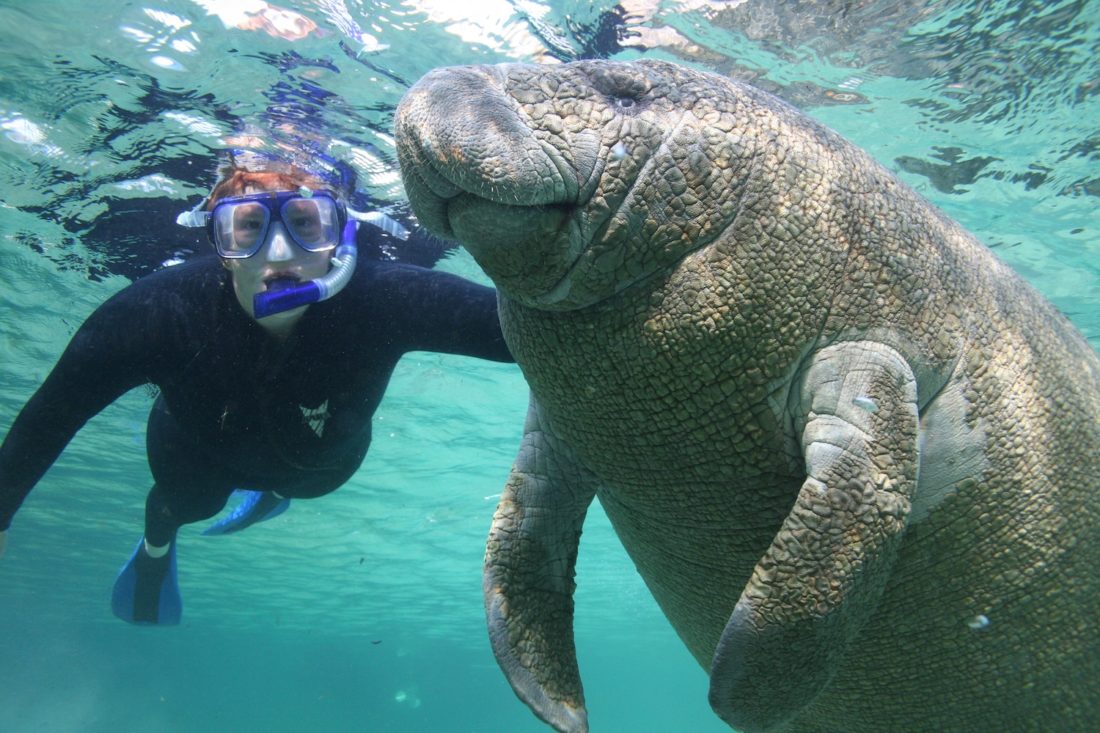
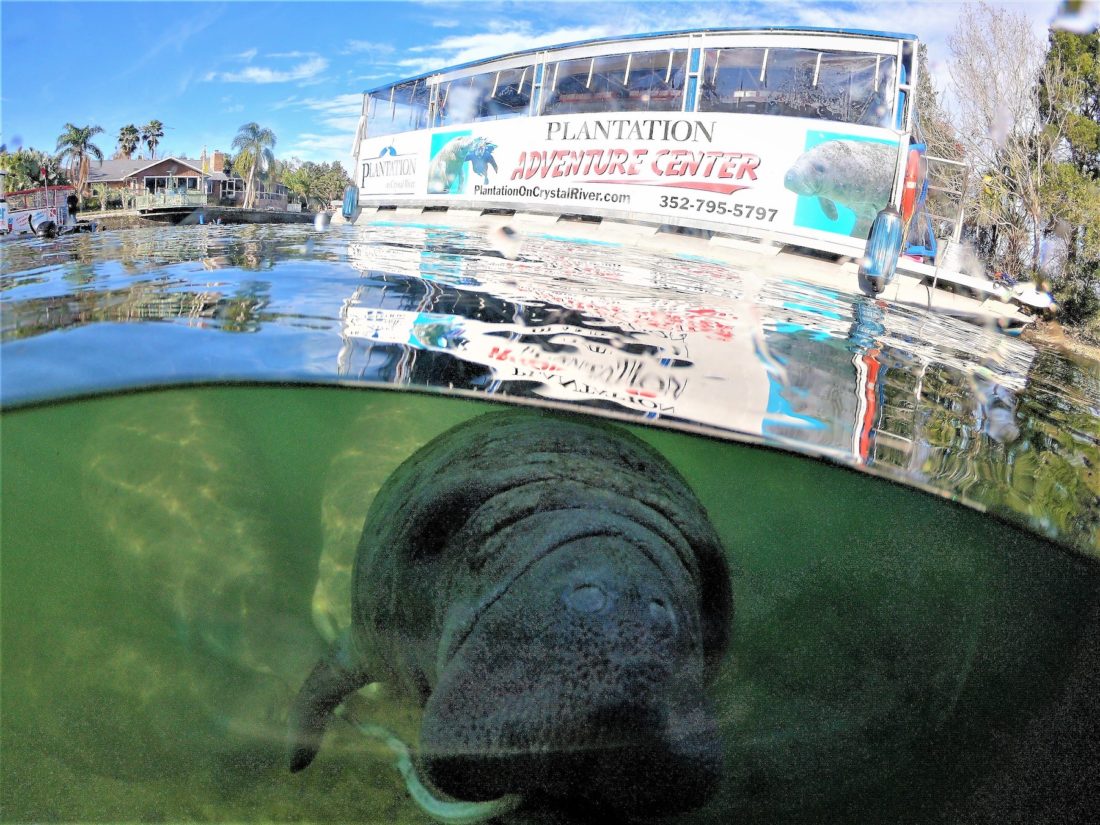
Once on the sandy bottom, Sea & Shoreline, an aquatic restoration company, plants two varieties of seagrass: Salty Dog, which is saltwater tolerant; and Rock Star, so named for its tremendous growth potential. “[The seeds] are spread through animals carrying them, and even storms and hurricanes,” says Moore. “We’ve got a tremendous habitat, and there’s so much food for manatees here.”
Sea & Shoreline recently finished a large project in St. Andrew Bay in Panama City, another project in the Caloosahatchee River in South Florida, and two successful pilot programs in Indian River Lagoon on Florida’s east coast.
“Each [program in Indian River Lagoon] was planted over a year ago, and each has two acres of seagrass,” says Heather Herold of Sea & Shoreline. “The good news is that the seagrass is growing and surviving in the demonstration project. If that will work here, it can be a model for the State of Florida.”
That’s good news for hungry manatees.
More good manatee news comes by way of recent releases of rescued and rehabilitated animals. Since the beginning of the year, nine manatees have been released into the wild: four at Blue Spring State Park; three at the Manatee Viewing Center near Tampa; and one at Manatee Lagoon in West Palm Beach. Five of these manatees suffered from cold stress, two were emaciated, and one manatee recovered from severe watercraft injuries. They were rehabilitated at the David A. Straz, Jr. Manatee Critical Care Center at ZooTampa at Lowry Park, Miami Seaquarium, SeaWorld Orlando, and the Cincinnati Zoo & Botanical Garden, all of which are a part of the Manatee Rescue & Rehabilitation Partnership.
At Crystal River and Kings Bay, Cross says that he’s seeing a lot of newcomers lately. His part of central-west Florida is one of the only places in the world where people can legally swim and snorkel with manatees. “Every animal [it seems] has a calf with it,” he says. “There are so many babies out in our area.”
A new generation of manatees—that’s a hopeful thought.
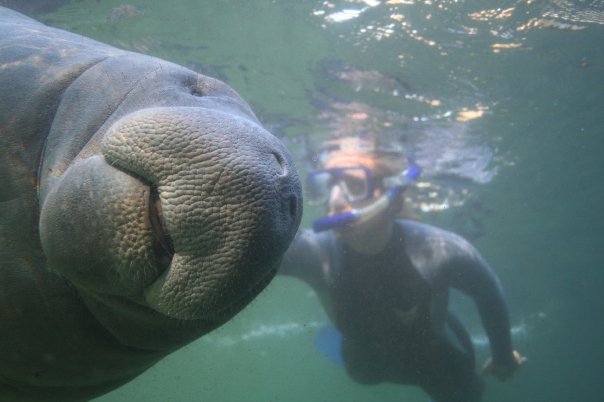
The Florida Fish and Wildlife Conservation Commission shared a few ways you can minimize harm to manatees and the grass they feed on:
• Practice smart boating by avoiding navigation through shallow grass beds.
• Be careful when applying fertilizers and pesticides; rain can wash excess chemicals into rivers or other water bodies that drain into the sea.
• Use grating rather than planks when building or repairing a dock. Grating allows sunlight to penetrate to grasses living below docks.


